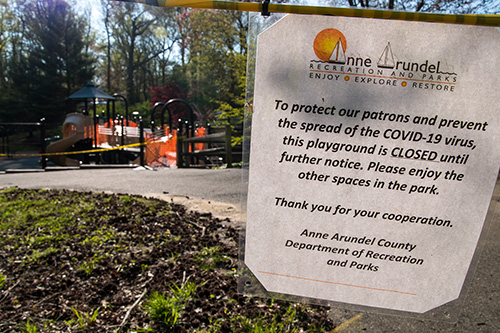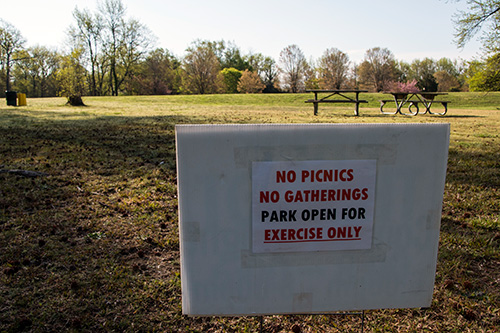Blog Posts | May 1, 2020
Share ThisIn the Moment: Archiving Daily Life in a Pandemic
How Historical Societies, Libraries, Archives, and Museums are Documenting the Effects of COVID-19
By Erica Jaros

(Erica Jaros/IMLS)
History is a community story that is being written around us every single day. The personal stories of struggle and triumph are what connect people across the world and bring history to life for generations.
The COVID-19 pandemic has created a unique opportunity to document what will likely become a significant period in history. At a time when people are adjusting to stay-at-home orders, online schooling, and wearing masks, libraries and museums are asking their communities to share what life is like in their homes and neighborhoods.
Historical societies are leading the way in actively documenting the effects of the pandemic on everyday life.
For Lindsay Varner, community outreach director at the Cumberland County Historical Society in Pennsylvania, it started when she and fellow staff members began taking photos of notices and signs posted outside of businesses around their homes.
“As a cultural institution, I began to wonder how we can help during this time,” said Varner. "I remembered one of the photos I took outside a business where the entire sidewalk was filled with chalk art wishing the staff well and sending them ‘social distancing hugs.’ That photo made me realize what we could offer the community and it was hope and support via stories.”
From that, they developed a digital archive, Cumberland County during COVID-19: Archiving History as it Happens. They are asking county residents to submit photos, videos, and stories about how they are adapting to new routines created by social distancing requirements. The contributions are being added to a digital StoryMap, which is updated daily.
“Along with submissions to the StoryMap, we’re also getting paper donations for the library and archives, including a nonprofit EMS organization that reached out asking if they could donate paper memos they’ve gathered throughout the pandemic,” Varner said.

(Erica Jaros/IMLS)
Varner says that gathering stories and information from the community is beneficial for future research. “As a social historian, I frequently think about future researchers and how crowd-sourced information and projects will change and add to our historical understanding and knowledge.”
Also among the many collection and archiving efforts, the New York Historical Society expanded its History Responds initiative to include the pandemic. Minnesota’s Anoka County Historical Society sent out a survey to gather individual stories about the impact to employment and how people are dealing with COVID-19. And the Maine Historical Society previously received a grant from the Institute of Museum and Library Services for expansion of its Maine Memory Network, which is now asking for COVID-19 related stories from across the state.
But historical societies are not alone in the effort to preserve the collective experiences of their community. IMLS has recently funded oral history projects, like the ones at the San Francisco Museum of Modern Art and the Benzonia Public Library. Over the years, libraries have been increasing their local history collections through documents, videos, and recordings. Those types of initiatives have become even more important during this time.
When Fran Carr, the local history and genealogy research services coordinator at the Pendleton County Public Library in Kentucky began research for an article comparing COVID-19 to the 1918 Spanish Flu for the local paper, she struggled to find detailed accounts.
“I found very little on record except obituaries and a few published notices from the local health department,” Carr said. “I realized that the same would likely happen with the quarantine if we didn't record it as it was happening.”
She saw announcements from other libraries about documenting life during this period of social distancing and created the History as it Happens writing project. The library’s goal is to collect perspectives from people in their county of all ages, backgrounds, and professions as they navigate the pandemic. Community members can start a journal or respond to writing prompts developed by Carr.
“I wanted people to tell in their own words what they experienced during this pandemic,” she said. “I thought this would let the reader ‘see’ what was happening and ‘feel’ the emotions connected to it.”

Carr explained that the library often has students use their files to write reports on topics of local history. She believes this will be of interest, especially as students who never experienced it or were too young to remember it come through the school system. But the records will also have a broader impact as people look back on this time.
“Years from now, people will look back and they’re going to wonder what we did during our time, what we experienced, and how it changed us,” said Carr in a video shared on social media.
When the library reopens, they will coordinate a time for people to bring in their writing but for now, Carr says, “just sharpen those pencils, get out your ink pens and paper, boot up your computer and let’s write.”
